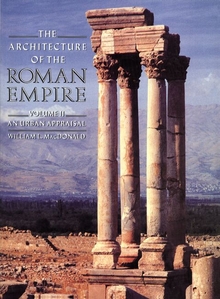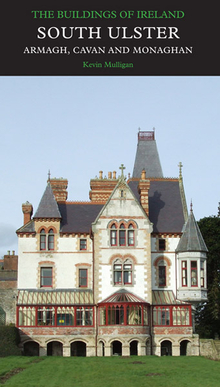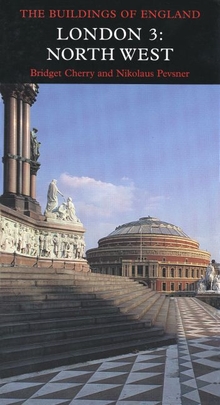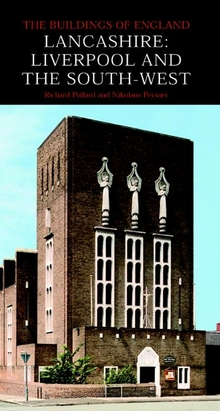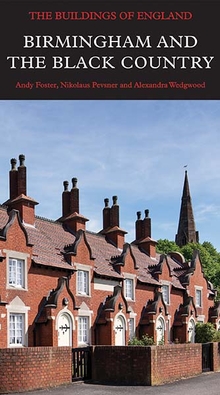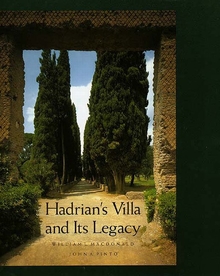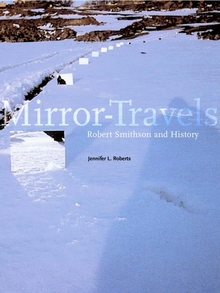The Architecture of the Roman Empire
WARNING
You are viewing an older version of the Yalebooks website. Please visit out new website with more updated information and a better user experience: https://www.yalebooks.com
An Urban Appraisal
William L. MacDonald

Read this book online via the A&AePortal, our art and architectural history eBook platform. To learn more about how to access this book, please contact us.
The author of a classic work on the architecture of imperial Rome here broadens his focus to present an original study of urban architecture in Roman market towns, port cities, veterans’ colonies, and major metropolitan centers throughout the empire.
“Simply the best book on Roman urbanism [that] I know. . . . A formidable breakthrough. It brings to life the genius of Roman urbanism and reveals its continuing relevance for present urban planning and architecture.”—Leon Krier, Architects Journal
“In this very fine book—the successor to his Introductory Study—William L. MacDonald lays before the reader the physical evidence of what a Roman city was like for its inhabitants. . . . The illustrations in An Urban Appraisal, this second volume of The Architecture of the Roman Empire, are superbly chosen, illuminating the text as well as being interesting in themselves. . . . It is a joy to find a book so attractively designed, worthy of both its author and his subject.”—Martin Henig, The Times Literary Supplement
Winner of the 1986 Alice Davis Hitchcock Award of the Society of Architectural Historians for the most distinguished work of scholarship in architectural history.
“Simply the best book on Roman urbanism [that] I know. . . . A formidable breakthrough. It brings to life the genius of Roman urbanism and reveals its continuing relevance for present urban planning and architecture.”—Leon Krier, Architects Journal
“In this very fine book—the successor to his Introductory Study—William L. MacDonald lays before the reader the physical evidence of what a Roman city was like for its inhabitants. . . . The illustrations in An Urban Appraisal, this second volume of The Architecture of the Roman Empire, are superbly chosen, illuminating the text as well as being interesting in themselves. . . . It is a joy to find a book so attractively designed, worthy of both its author and his subject.”—Martin Henig, The Times Literary Supplement
Winner of the 1986 Alice Davis Hitchcock Award of the Society of Architectural Historians for the most distinguished work of scholarship in architectural history.
"Simply the best book on Roman urbanism [that] I know. . . . A formidable breakthrough. It brings to life the genius of Roman urbanism and reveals its continuing relevance for present urban planning and architecture."—Leon Krier, Architects Journal
"A splendid and rewarding book by an American authority on the subject examines in depth the nature of Roman town planning."—Thomas Williams, Irish Times Limited
"In this very fine book—the successor to his Introductory Study of 1966—William L. MacDonald lays before the reader the physical evidence of what a Roman city was like for its inhabitants. . . . The illustrations in An Urban Appraisal, this second volume of The Architecture of the Roman Empire, are superbly chosen, illuminating the text as well as being interesting in themselves. . . . It is a joy to find a book so attractively designed, worthy of both its author and his subject."—Martin Henig, Times Literary Supplement
"MacDonald convincingly establishes a series of architectural elements shared by all Roman settlements and shows how each settlement was designed to provide an enveloped inner sanctum of structures linked by roads and plazas. . . . Lucid and articulate, MacDonald has once again produced a learned work of significant value to the general reader as well as to the informed scholar. . . . A unique talent for making the complex comprehensible, a scholarly command of the subject and a facile style of writing enable MacDonald to achieve his avowed purpose: 'to interpret imperial architecture by analyzing its urban purposes and content'. A fine book, against which all future works of its type must be measured."—Henry V. Bender, Classical World
"MacDonald's first volume was a seminal study of the rise of Roman imperial architecture; his second is an equally stimulating and significant contribution to our understanding of Roman urbanism. . . . The book is beautifully written, at times even poetic. There is no one writing in English about Roman architecture whose prose is more evocative than MacDonald's. . . . The book is amply illustrated, and the photographs are of high quality. . . . This important book should have the same influence on architectural historians and on students of ancient and modern architecture as did [Volume, I]."—Diana E.E. Kleiner, Journal of Society of Architectural Historians
"The result is an ambitious work, the product of a vast amount of travelling, which draws its material freely from much of the Roman Empire. . . . This book breaks new ground and should stimulate debate."—Frank B. Sear, Dept. of Classics, University of Adelaide
"MacDonald (formerly of Yale and Smith), is well acquainted with Rome's imperial cities. . . . He has produced a well-documented appraisal of the presence of first century CE on. Unlike most of his colleagues, MacDonald is concerned with the relationships of buildings to the streets and to the public open spaces that they define. He views such relationships in their historical social and physical context. . . . As an excellent scholar he backs up his conclusions with convincing references and remains tentative when in doubt. This is an admirable book, intelligently illustrated in tandem with the text and providing a well-organized bibliography. A must for the shelves of all undergraduate and graduate art history and urban design collections."—Choice
"This is a book that runs wide and digs deep, looks from a distance and inspects from close quarters, and comments on the richness of Roman towns in which 'Walking around energizes architecture so that it can play its part in the mobile observer's narrative experience.'"—B.A. Sparkes, Greece and Rome
"The product of a lifetime of research and travel, is a thoughtful, stimulating provocative work for which all students of Roman art and architecture must be considerably in his debt."—James E. Packer, American Journal of Archaeology
"MacDonald sees the Roman urban landscape, with its colonnaded streets and plazas and grand public facades, as the backdrop for the individual buildings. In this provocative view, the monuments cannot be separated from the framework of the city into which they were placed and against which they were seen by their builders. . . . MacDonald has chosen to document important provincial sites in North Africa, Europe, and the Near East—sites travelers often visit and scholars usually cite, but which are seldom so sensitively and abundantly illustrated in general works such as this one."—William E. Mierse, Archaeology
"A stimulating, even important work of architectural history and criticism."—Richard Brilliant, American Historical Review
"[A] persuasively argued, brilliantly observed study."—Doug Suisman, Design Book Review
"A learned work of significant value. . . . A fine book, against which all future works of its type must be measured."—Henry V. Bender, Classical World
"A valuable contribution in the articulation of fundamental questions about the broader 'content' of Roman imperial architecture."—Lynn T. Courtenay, Technology and Culture
"This book has much to offer, with remarkable clarity and economy, to anyone interested in urbanism, architecture or the history of art."—Fergus Millar, English Historical Review
"Still a pleasure to read."—Ann Olga Koloski-Ostrow, The Classical Outlook
"A welcome contribution to the knowledge and evaluation of the architecture of the Romans."—Kjeld De Fine Licht, Journal of the Society of Architectural Historians
Co-Winner of the first Kevin Lynch Award from the Massachusetts Institute of Technology, Dept. of Urban Studies and Planning in 1989
Winner of the 1987 Alice Davis Hitchcock Award
ISBN: 9780300034707
Publication Date: March 11, 1988
Publication Date: March 11, 1988
320 pages, 8 x 11

